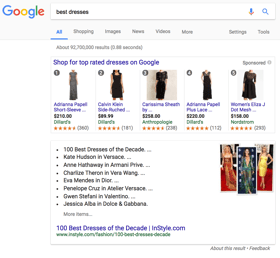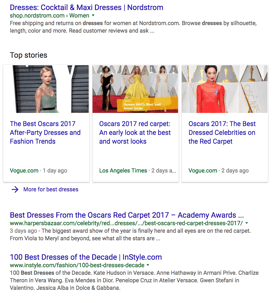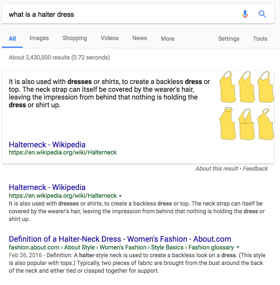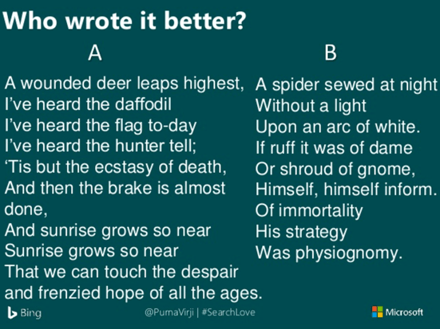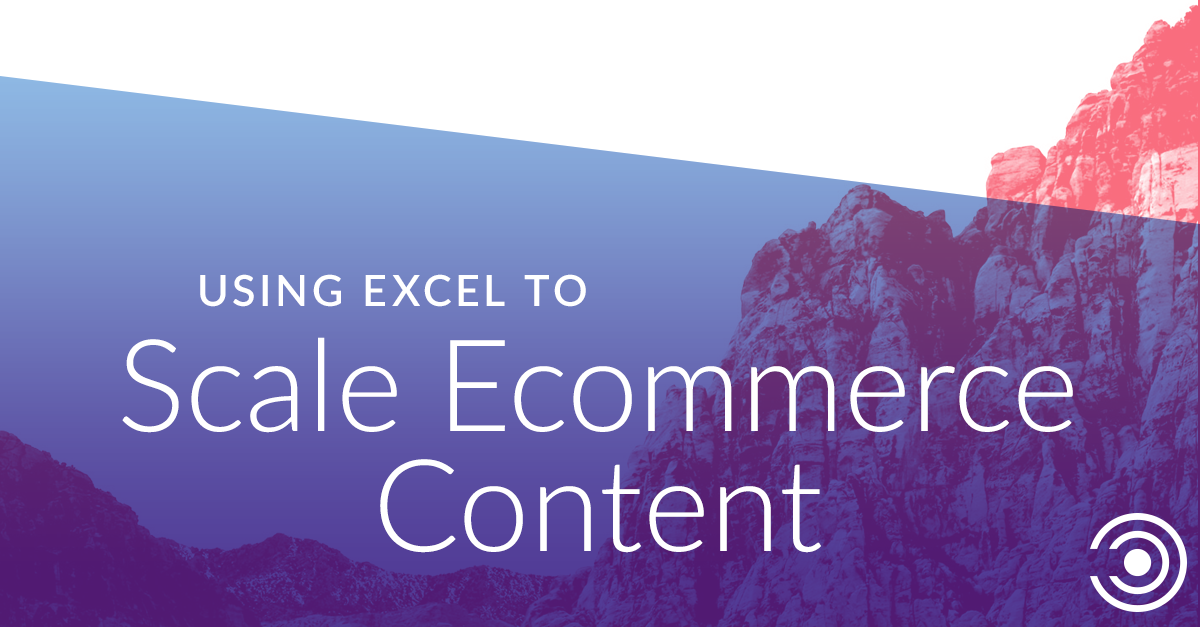How SearchLove 2017 Reinvigorated My Love For Search

Adept’s SEO Manager & resident Excel nerd had the opportunity to attend the SearchLove Conference this year. Find out what Katie learned about content, PR, AI, and more in relation to SEO.
I had the pleasure of attending SearchLove San Diego last week. It was my first SEO focused conference and I must say, it did not disappoint! Most of the conference didn’t focus on what I expected from SEO, like title tags or canonicals, and I’m so glad it didn’t.
As most of us in the industry know by now, SEO isn’t just the technical aspects of your website anymore—it touches on so much more.
Content, PR, chat apps, AI and data analysis were all staples across multiple presentations. Here are some of my favorite takeaways.
1. Understand the Digital Points of Leverage
This one hits home with our SEO team at Adept. We’ve been spending time looking at search features and how to leverage them for our clients.
Rob Bucci (@STATrob) from Stat Search Analytics presented amazing data analysis on thousands of retail keywords aimed at identifying what types of intent trigger specific features. Not only will this data be useful, but it proves this is the direction in which SEO needs to go.
Ranking better isn’t the goal. The goal is to understand which search features–or points of leverage–exist in your vertical, and drive the strategy for your business to improve share of voice. Have a lot of answer boxes? Write content to fill them. Shopping boxes galore? Make sure your product is there. Local Pack? Go get some reviews and citations.
2. A Computer Can Write Poems that Rival Emily Dickinson
Artificial intelligence (AI) is already writing content that is indistinguishable from famed poets. Seriously. It fooled about half the people in the room during Purna Virji’s presentation. Can you get it right?
highlight for answer: AI = A; Emily = B
Does that scare you yet? It shouldn’t. Artificial intelligence isn’t just the future. It’s already here. It’s time for your company to accept that and all the changes it could present.
Machine learning is a form of AI many of us are familiar with. Whether that be AI written content, AI user experiences, or AI efficiencies your workplace could incorporate, machines are learning more than they are being programmed.
Will Critchlow, Mr. Distilled himself, ended the conference with a great presentation on how robots and AI are taking over and how to robot-proof your job. If you are doing a highly repeatable, checklist-mentality job, turn it into a robot that does it better than you. You’ll lose the boring repeatable task, but improve your consultancy and business skills in the process. Embrace the changes.
My boss regularly tells me that my Excel skills are going to be pointless one day. It makes me die a bit inside, but he’s right. I could sulk in the corner, or I could find the best tools, train others, and become more efficient at my job. Embrace the robots and enjoy being their master…until they eventually take over, right?
3. Everyone Should Be Ready for Chat Apps and Non-Website Online Experiences
I wasn’t expecting to take so much away from the presentations on chat apps, but they may have taught me the most. I don’t regularly use apps like WhatsApp or Facebook Messenger, but that doesn’t mean millions of others aren’t. There is a ton of opportunity on these apps. The web as we know it is over. Your customers are having conversations with bots and experiences with your brand that never once touch a real website.
As marketers, we are faced with the need to change our experiences to make our customers lives easier. Chat apps help you do that. There is potential to turn a checkout page into a conversation with a bot. For example, you can order Dominos through a bot with only a few interactions and no need to fill out a delivery or payment form.
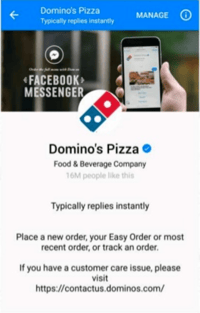
As a customer, this solves many pain points that you experience. It’s no longer about a brand marketing to a user. It’s now about a person having a thought, and a brand providing a simple solution through an experience.
Shout out to Jen Stile WhatsAppening with Chat App Marketing Now & Purna Virji’s Conversions in a Landing Page-Less World for expanding horizon and teaching how to use these new marketing platforms.
4. Use User Testing to Help Write Your Content
Joel Klettke did an amazing presentation on actionable ways to write content that the user actually wants to read.
On the subject of customer research: don’t just use it to conduct A/B tests. You should be using your customer research to write your content and answer their questions. This is the most valuable resource a company has. Don’t spend hours writing content YOU think is great, and instead write what your customers want. (tweet this)
.png?width=493&name=blog%20graphics%20(2).png)
graphic source
You can do this by finding common words, recurring themes, and insightful feedback from surveys, interviews, live chat and more. In his deck, Joel gives some great tips on how to improve your interviews and survey responses as well. My favorite is the free documentation spreadsheet he provides. This makes it easy for the team working on research to document common quotes and phrases, and deliver to the content team to use with writing. Bridging that gap is the hardest—and the best thing to do for your company.
5. Content Matters—More Than Ever
There were plenty of talks on how to leverage content or find that unicorn piece of content. It reinforces that content should not be an afterthought. Content should be tested, written regularly, adjusted, refreshed, and improved. There is no “write content and they will come” mentality.
Just check out some of the amazing presentations by:
- Larry Kim – How to find the unicorns in your content, and how to leverage them once you find them
- Wil Reynolds – Humanize the Search results. Understand that context, tone, and content matters beyond search engines and keywords to provide an answer to a real person.
- Kirsty Hulse – How to create content for PR linking strategies
- Tom Critchlow – Current state of content: who is producing, how it’s being done, distribution techniques, and how SEO fits in
- Rand Fishkin – What makes great content. An analysis of “10X” content and why it performed, or didn’t perform, and how to make yours 10X
- Vicke Chung – Focus on your content foundation and build up to “wow” pieces
- Travis Wright – Find the right MarTech tools to support your strategies
6. Local is So Much More Than Citations
For those that don’t know, there are two types of SEO – traditional and local. Most people think traditional is local, but local is a truly unique part of SEO. Greg Gifford dropped some serious truth bombs on local SEO, and incorporated some movie references I sadly was too young to understand.
Greg covered the most important ways to react to the Possum update (…and thankfully called out whoever named it Possum). He covered how to take local SEO past simply getting citations correct. Local SEO requires local links, on-site local content signals, correct NAP, and truly local content. If your business doesn’t have a local strategy past Yext or signing up for Google My Business, then we should talk.
7. Test, Test, and Test Some More
Multiple tools have started testing SEO. Distilled’s ODN and Rank Science are just a few. Don’t just do SEO and hope for the best. Test the results. You may improve rank, but decrease click-through-rate resulting in less traffic. And you would never know that without testing.

Ross Simmons brought his own testing framework: Build, Ship, Learn, Decide. Go through each stage to test out something fully before deciding. And don’t be afraid to fail. Failure is key.
Testing used to feel limited to conversion rate optimization. But that’s just one stage. Test SEO. Test Email. Test PPC. Test Design. If you aren’t testing you could be making the wrong decisions or missing a huge opportunity. (tweet this)
Part of testing is ensuring you have the right data. Look no further than Annie Cushing to make certain you’re getting the data you need to make the right decisions. Annie presented on how to set up analytics to inform you when something isn’t tracking right. For more details on Google Alerts, check out this post from our very own Reid – How to Use Google Analytics Alerts as an SEO Monitoring Tool.
8. Mobile Matters
Everyone has been designing websites for desktop for years. But that’s over. Mobile experiences matter more. Ensure your mobile site is optimized with some great speed tips from Emily Grossman. Got an app? She’s got tips for that as well.
Marcus Tober also touched on mobile experience during his presentation on Mobile Ranking factors. For those that don’t know, Google is moving towards a mobile-first index. It’s not enough to just have the same content on mobile. Ensure the experience and speed of your mobile site matches what users expect, otherwise they will bounce right off your page. (tweet this)
To Wrap it Up
All in all, the conference really reopened my eyes to the future of SEO. It’s easy to get stuck in the day-to-day and forget about the bigger picture. I absolutely recommend forwarding every conference announcement email to your boss until they give in and send you to a conference (seriously, Distilled, put this CTA in your email campaigns!).
Did you attend SearchLove2017? Have any comments/questions? Drop me a line in the comment section below, I’d love to hear from you!
